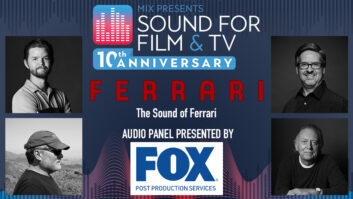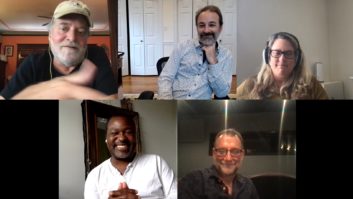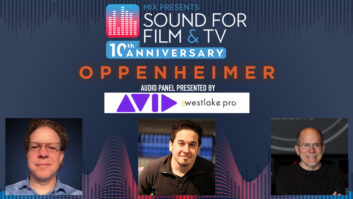The Event Live Expo 2012 at Los Angeles Convention Center at the beginning of February hosted a wide variety of panel sessions that included “Sound System Innovation: How to Control the Cacophony and Create the Optimum Entertainment Environment.”
The panel, moderated by John Lyons, owner of sales, design and installation company John Lyons Systems, and an owner/operator of numerous nightclubs, also included Kenton Forsythe, founder of EAW; David Gunness, formerly of Electro-Voice and EAW and coowner/ CTO of Fulcrum Acoustic; and Dave Dean, who has owned and operated clubs and outdoor music events around the world, beginning as director of Limelight in London in 1988.
As Lyons noted in his opening remarks, loudspeaker system developers initially created speakers with a wide dispersion and accurate reproduction that were designed to be positioned left and right of a stage. But as dance clubs and nightclubs began to spring up, it became apparent that these speaker products were just not suitable.
A nightclub typically has dozens of speakers dispersed throughout the venue, he noted. “By the time the information arrives, it’s a mess. What sounds like distortion oftentimes is multiple instances of the same information arriving at different times.”
“You want the people listening in the direct field of the sound, but you don’t want it all bouncing around off other surfaces and creating a cacophony,” said Forsythe, who worked with Lyons to develop the EAW Avalon series, named for the Hollywood live music and dance venue previously known as the Palace. “One of the key aspects of system design is focusing the sound on the dance floor, with maybe four or six main speakers. The opposing speakers help create cancellations off the floor.”
In other areas of a club, he continued, additional speakers create a local, direct field that takes advantage of the precedence effect, or law of the first wavefront. “You may be getting bleed from the dance floor but you have a supplemental device that is the first arrival. The ear will pick up the first arrival and tune into that,” said Forsythe.
Gunness, a pioneer in the use of system-wide DSP and developer of Gunness Focusing, which uses DSP to correct anomalies and resonance problems within individual speakers, noted that the ability to put each box on a separate delay in a club system was a major step toward improving sound quality. “You can achieve blanket coverage of the room, where the entire room is essentially the same SPL and, ideally, the same quality and character,” he said. “Once everything is cooperating as a single impression, you can raise the level and still have a pleasant experience.”
Lyons observed, “The music that’s played in a nightclub is not accurate. There are exaggerations in certain parts of the spectrum that require a box that is designed to recreate that exaggerated sound. You really have to treat it like a thrill ride. The visceral experience that you get on a raw, powerful dance floor is indescribable.”
Despite the focus on sound equipment, Lyons continued, don’t forget the importance of a venue’s architecture and acoustic treatment. “The real trick is getting the room right. If the room is bad and you don’t do anything to correct it, it’s going to sound bad. If it’s a great room and you put mediocre stuff in, it’s going to sound really good.”
Recounting in detail his experiences when first taking over the Palace, he summarized, “If you’ve ever been to a place that sounded really bad, usually it can be traced back to the people who installed that system. They didn’t give the proper thought to what the real problem was and set out to solve that problem.”
Outdoor events present a different set of challenges, noted Dean. “Outdoor festivals have been transformed with the introduction of the line array. I’ve done events in downtown L.A. where we’ve had to position the system so it wouldn’t hit a hotel five blocks away, which is an entirely different problem. In an outdoor festival, it’s about how far you can push it without getting into trouble with the neighbors.”
In response to a question from the audience regarding the tools available to design and tune a club system, Lyons responded, “We use a number of different software programs and then some intuition, but mostly, it’s just math.” He added, “It is every bit as important to get information to couple as it is to get it to cancel.”
“You have all these tools these days, like Smaart and EASE. But at the end of the day, the best analysis instrument you have is right here,” said Forsythe, tapping his head. “All these other instruments we’ve developed are trying to give some graphical or screen presentation that replicates what you hear. So don’t be afraid to trust your ears.”
EAW
eaw.com
Fulcrum Acoustic
fulcrum-acoustic.com







